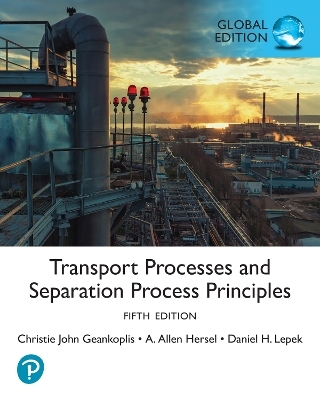
Physical and Chemical Separation in Water and Wastewater Treatment
Seiten
2020
IWA Publishing (Verlag)
978-1-78906-129-1 (ISBN)
IWA Publishing (Verlag)
978-1-78906-129-1 (ISBN)
Based upon half a century of research by the authors, Physical and Chemical Separation in Water and Wastewater Treatment addresses the whole water cycle spectrum, from global hydrological cycle, urban-regional metabolic cycle to individual living and production cycle, with respect to quality control technology based on fundamental science and theories. For every treatment process, basic scientific and environmental physical and chemical natures are explained with respect to those of water and its impurities. Health danger and risks for human beings are also covered.
The authors define water qualities on a “Water Quality Matrix” composed of 35 elements. The vertical axis (row), has individual 7digit impurity size from 10-10m (water molecule 3?) to 10-3m (0.1mm sand grains) and in the horizontal axis(column) there are 5 categories of surrogate chemical and biochemical quality indices. The same 35 element matrix is used to correspond with several typical water quality treatments, unit-operation/unit-process, with a suitable characteristic grouping of the elements. The authors then present “the Water Quality Conversion Matrix” or “Water Quality Treatment Matrix”.
With respect to typical treatment processes, the basic concept and scientific background are explained and the background of the technologies is clarified. Mechanisms of the process are explained and a kinetic process is formulated. The kinetics are experimentally verified quantitatively with important equilibrium and rate constants. Based on the authors’ research, various new treatment technologies are proposed with high efficiency, high capacity and less energy, and with steady operation ability.
This comprehensive reference book is intended for undergraduate and graduate students, and also serves as a guide book for practical engineers and industry and university researchers.
The authors define water qualities on a “Water Quality Matrix” composed of 35 elements. The vertical axis (row), has individual 7digit impurity size from 10-10m (water molecule 3?) to 10-3m (0.1mm sand grains) and in the horizontal axis(column) there are 5 categories of surrogate chemical and biochemical quality indices. The same 35 element matrix is used to correspond with several typical water quality treatments, unit-operation/unit-process, with a suitable characteristic grouping of the elements. The authors then present “the Water Quality Conversion Matrix” or “Water Quality Treatment Matrix”.
With respect to typical treatment processes, the basic concept and scientific background are explained and the background of the technologies is clarified. Mechanisms of the process are explained and a kinetic process is formulated. The kinetics are experimentally verified quantitatively with important equilibrium and rate constants. Based on the authors’ research, various new treatment technologies are proposed with high efficiency, high capacity and less energy, and with steady operation ability.
This comprehensive reference book is intended for undergraduate and graduate students, and also serves as a guide book for practical engineers and industry and university researchers.
| Erscheinungsdatum | 16.11.2020 |
|---|---|
| Verlagsort | London |
| Sprache | englisch |
| Maße | 156 x 234 mm |
| Themenwelt | Technik ► Umwelttechnik / Biotechnologie |
| ISBN-10 | 1-78906-129-6 / 1789061296 |
| ISBN-13 | 978-1-78906-129-1 / 9781789061291 |
| Zustand | Neuware |
| Haben Sie eine Frage zum Produkt? |
Mehr entdecken
aus dem Bereich
aus dem Bereich
Kommentar der DIN 15905-5, LärmVibrationsArbSchV und …
Buch | Softcover (2023)
DIN Media (Verlag)
58,00 €
Buch | Softcover (2023)
DIN Media (Verlag)
75,40 €
Buch | Softcover (2024)
Pearson Education Limited (Verlag)
75,95 €


